International Rule Gets Traction in USA
Published on March 29th, 2017
The Offshore Racing Congress is an international organization with rating offices established worldwide to administer the use of ORC as a rating rule to handicap different designs of keelboats to allow them to race together. Scuttlebutt editor Craig Leweck checks in with Dobbs Davis, Communications Director for ORC, for this update.
What is the state of ORC?
The state of ORC is strong as 2016 was another record year of growth in the numbers of certificates and boats that use ORC Club, ORC International or ORC Superyacht certificates. The number of countries now using ORC has increased to 45.
Growth is equally significant in the US with major regattas such as Quantum Key West Race Week, NOOD, Charleston Race Week, New York YC’s Annual Regatta and Block Island Race Week using the system as well as other events throughout the east, south, and west coasts.
ORC Championship events such as the Worlds, Europeans and Sportboats continue to attract record entries: 131 at the Worlds in 2016, 78 at the Europeans, and 40 at the Sportboats. Entries at this year’s World’s in Trieste will be capped at 150, as will the Europeans in Gdansk, Poland at 100. Bids for these events extend out as far as 2020, demonstrating a strong demand.
What is the advantage of being an international rule?
The advantage of being international is that higher standards of rules, documentation and acceptance across many multiple markets are required by World Sailing to maintain this status, as well as the volume of data available to analyze measurements and race results to know if the system is working well and where to make improvements.
The test fleet of ORC boats used by ITC to analyze the accuracy of the system is vast: the entire current ORC International fleet of 1967 boats that represent some 1100 different designs. These are both old and new boats, production and custom, and represents a broad fleet representative of any fleet in the world. Having a VPP system that works across this broad range of boat types is difficult, but achieved with improvements made every year by ITC.
Also, use in many countries means there are many bright minds working on helping to both use and improve the system.
ORC is the latest rating rule to enter the USA. Why?
ORC entry to the US was by invitation: there are fleets dissatisfied with the other options for numerous reasons, whether it’s being too subjective, not responsive enough to measurement and/or certification, not transparent in process or development, not confident of the accuracy of the ratings, too expensive, etc.
In local areas industry members and sailors alike have been begging for a robust system that can be objective, responsive, reasonably-priced, flexible, transparent and accurate, and find ORC to be the only choice that fits this criteria.
By policy US Sailing does not play favorites in this game, but is supportive of ORC because its principles of transparency coincide with its own at making all measurement data available based on the Universal Measurement System, which is being programmed now for processing in their new SAP-based certification system.
Filling the niche of racing dissimilar boats together using a fair and transparent system is not a political mandate; it’s a necessity to keep handicap racing alive at the local levels. In my view (some may debate this), PHRF or any single-number rule system can work where the boats are similar in type and size, but as soon as this diverges a more sophisticated system is needed to keep the racing fair…and even then it’s difficult.
The adage that “single number systems are okay on average throughout the course of a season” is fine if people accept that on any given day they’re okay to predict the winners based on boat type and weather. If not, then ORC offers a solution.
ORC uses a Velocity Prediction Program (VPP) to rate boat. How is that managed?
ORC’s VPP is maintained and updated yearly by the International Technical Committee comprising eight designers and technologists that meet three times yearly to pursue a research agenda and recommendations for improvements made by the users of the ORC system.
There is also a modified version VPP used for Superyachts that is managed and updated by ORC with help from the SuperYacht Racing Association (SYRA). Funding for the work of ITC comes from a typically 5-figure research budget funded by ORC, with occasional cooperation with SYRF. The ORCsy VPP is also funded by ORC, with development help from SYRA.
Does ORC shine brighter as an inshore rule or an offshore rule?
Being objective and scientific, with multiple scoring options, the ORC system has no bias in its performance for inshore or offshore racing. Certainly the system is used more for inshore racing since its users race more in this mode, and at the Championship events the rule is pushed to its limits in the format, with typically seven inshore and two offshore races scored.
Using the highest level of measurement and scoring accuracy, corrected time result differences in these championship events are usually within only seconds among the top teams. These crews are racing both race boats and racer/cruiser designs, indicating the system is able to fairly rate dissimilar boats, and only the top teams win on the water through good preparation and sailing, not clever rule-beating design.
Fair rating performance in offshore races is a simple matter of whether the actual conditions replicated those of the scoring models used for the race: the closer the actual conditions were to the scoring model, the more fair the results. The challenge is therefore choosing to use the appropriate model.
No rule is perfect. What are the pros and cons to ORC?
The pros to ORC is its professional staff of technologists (there are about 5 full-time and 6 part-time staff in the organization), use in many countries, vast resources of measurement data (there are 95,000 measurement records in the ORC database), the science used by top experts in the field to improve the system yearly, its flexibility in different scoring options, its lack of clear typeforming to favor some designs over others, and comeplete transparency of tools and process: everything is published, all is accessible and most resources can be found on the ORC website. All this contributes to ORC racing being objective, predictable and very competitive when used properly.
The cons to ORC is in its complication: measurement data is needed to get accurate certificates, and while some certificates can be quickly generated based on un-measured or assumed values, these will be less favorable to those that are based on more measurements and not defaults. The principle is simple: the more that is measured, the greater the accuracy. This is problematic in the US since outside of a few select areas of the country, there are few measurers available to provide these values. The fault lies in the vast popularity of one-designs (which in themselves are not always put in measurement control) and the PHRF principles of using declared data – both have prevailed in the last two decades, so measurement skills that used to be available for IOR, IMS and even MORC have atrophied.
Another complication is in scoring: with so many options, its important to have race managers select the appropriate scoring type to use or else results may be inaccurate. And while ORC ratings can be expressed in either Time-on-Time or Time-on-Distance, these need to be used in the proper way to get the right results that make sense and that the competitors understand. The use of single-number ratings is possible using ORC, but is not advised given the great variety of boat types in most fleets – their differences in performance can only be recognized by some scoring style that is more sophisticated than a single number. ORC is currently developing an ORC Race Management Guide to help educate race managers and sailors…this is due for completion soon.
What are the costs to boat owners?
Costs to boat owners range from as little as $100 for a Club certificate (US Sailing member pricing) to $8/foot plus measurement costs for an ORCi certificate. ORC One Design certificate pricing is also $100. Every new ORC certificate holder will also get 50 credits in the ORC Sailor Service system to use for making Test certificates, generate an ORC Speed Guide of polar performance, or get a Target Speed output report for windward/leeward course racing, all customized to their boat.
Note: This report previously said ORC would be the only measurement rating system used in Canada effective this year. While ORC is available for use in Canada, it is not the only rating system being used.


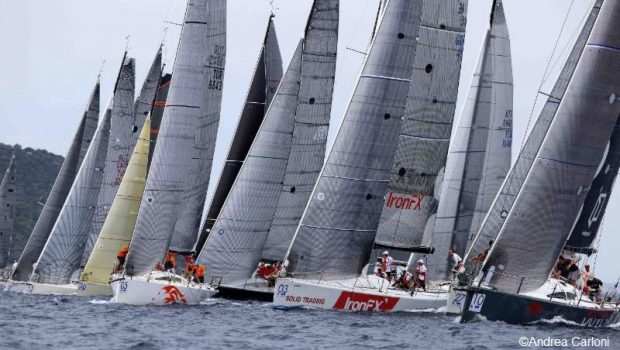


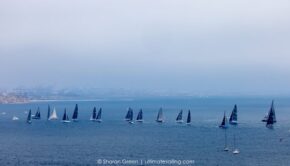
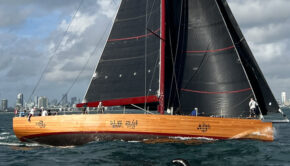
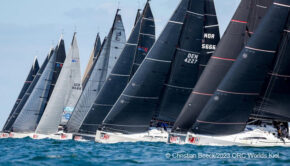
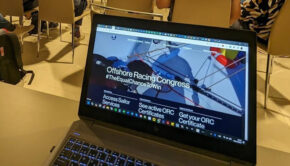
 We’ll keep your information safe.
We’ll keep your information safe.